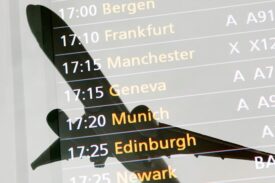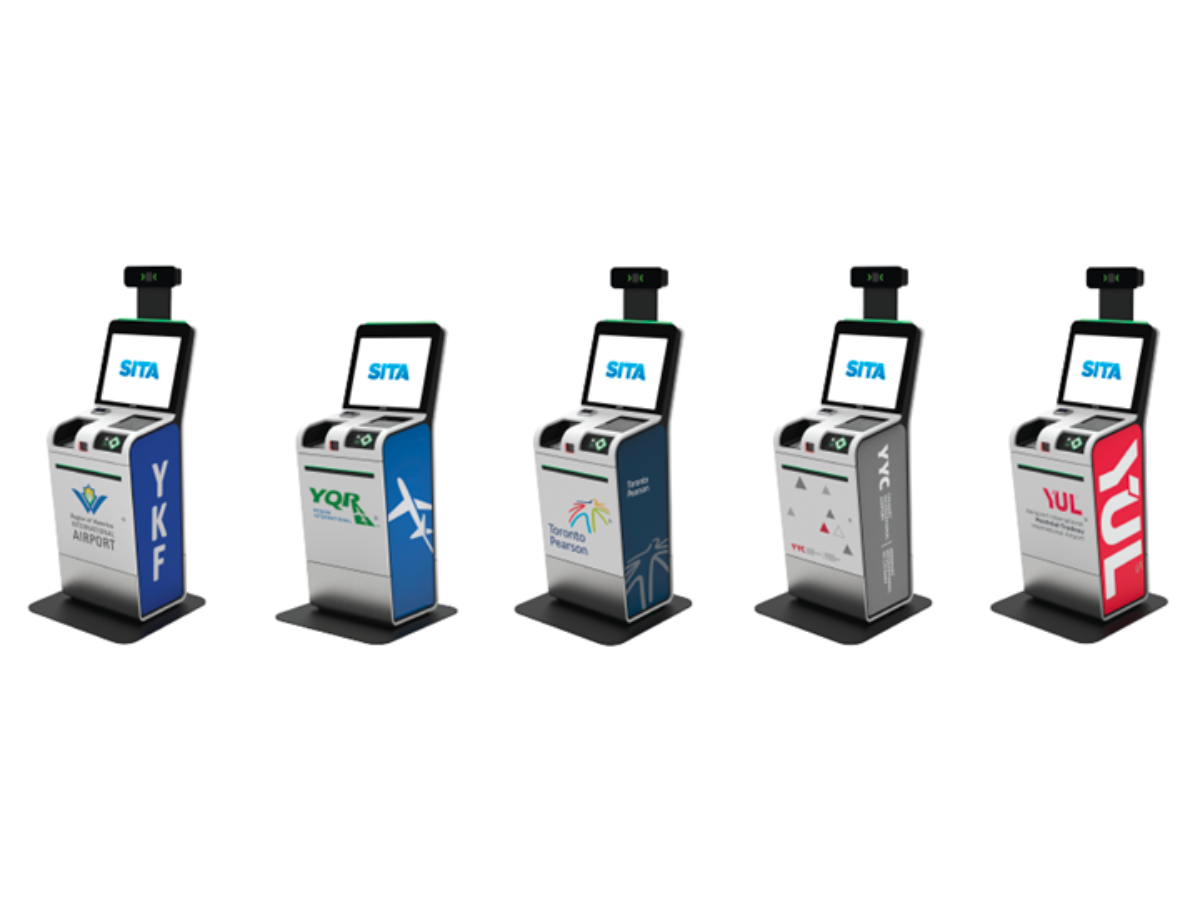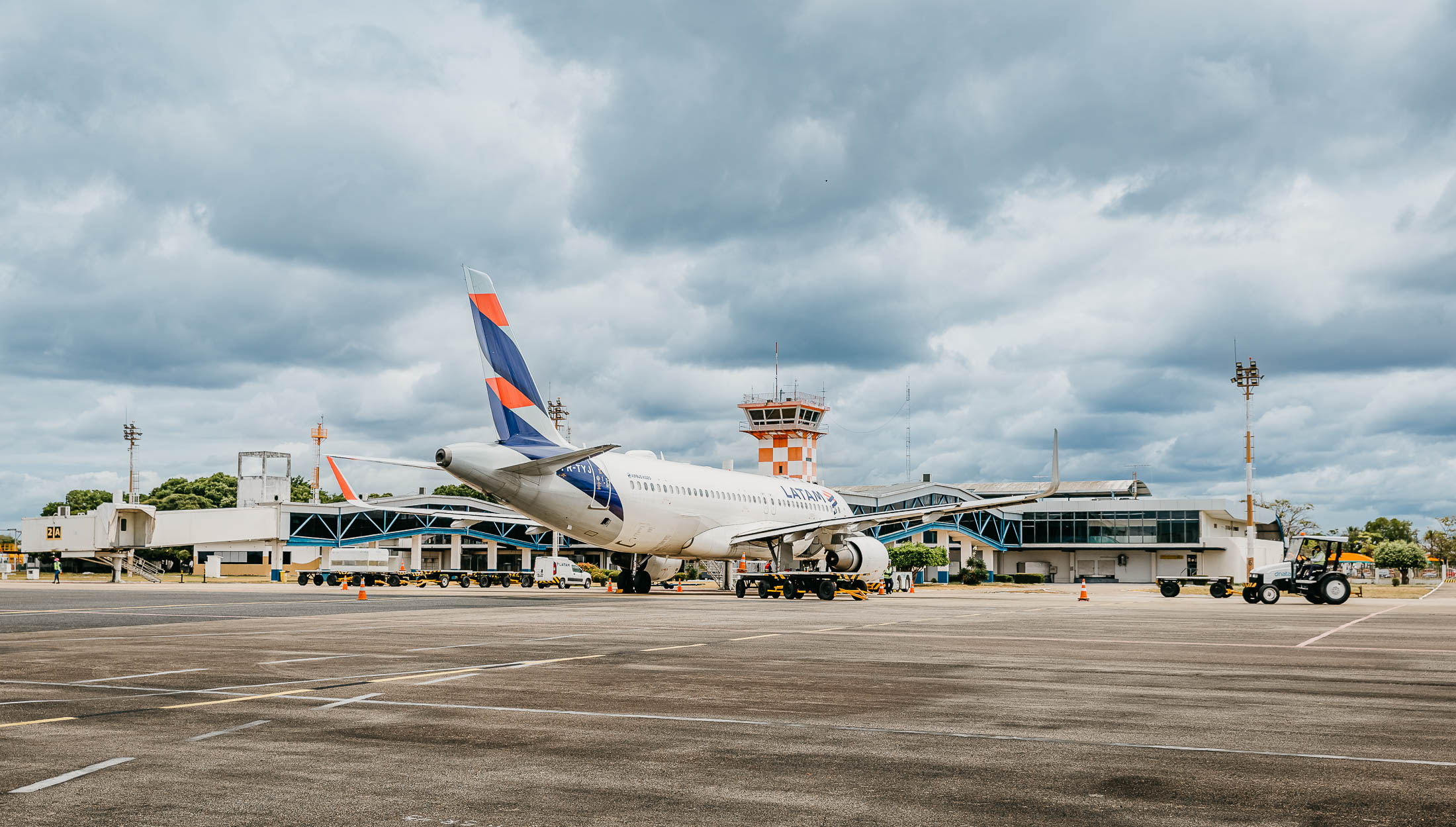Aircraft turnaround is a frenetic whirl of activity that must be accomplished at lightning speed to keep an aircraft aligned with designated schedules.
Each minute of delay costs an airline US$75. But it’s not just a minute that’s at stake. There’s a cumulative effect across the entire air transport system. For context, in 2019, delays cost airlines $8.3 billion in the US market alone.

Equally time-critical to turnaround is block times, encompassing push-back, taxiing, take-off, climb, cruise, descent, landing, and taxiing back to the gate at the destination airport. Once block times are assigned, missing timings have a knock-on effect with financial and reputational penalties for an airline. And that doesn’t just mean delays. Being too early can be equally problematic and costly. For example, due to bad weather blowing in, a pilot might prepare to take off quicker and speed through the route to avoid bad weather – arriving early at the destination. This can cause an aircraft to burn extra fuel as it circulates in a holding pattern before landing, or even the need to pay for extra time at a newly assigned gate if touching down ahead of schedule.
Thunderstorms, snowstorms, wind-shear, icing and fog account for around 75% of airline delays, and can knock airline schedules out of sync for days. These climatic burdens are set to increase in scale and persistence as a consequence of global warming, with cases of melting runways, ash clouds and hurricanes on the rise.
To keep this perpetual cycle of turnarounds and block times in motion requires terabytes of data and legions of specialized teams, covering fuel supply chains, air traffic management, baggage handling, security, catering, and much more, besides. Operational pressures are amplified by workforce shortages and the broader economic squeeze, bringing frustration for airline personnel and exasperation for passengers, whose loyalties to air travel ultimately drive revenue flow.
Sustainability and Fuel Efficiencies
There’s more to the equation: fuel accounts for almost 40% of an airline’s operating costs, therefore, every drop counts. Not only is the price of jet fuel erratic in the wake of the energy crisis – airlines also have an imperative to use less of it to curb emissions. At the 2021 IATA AGM, the (Fly Net Zero 2050) roadmap for achieving net-zero carbon emissions by 2050 was unveiled, committing aviation to alignment with the Paris Agreement objectives to limit global warming.
Collaboration Is the Missing Piece
While flight efficiencies and sustainability improvements are a priority for the industry, one key piece of the puzzle is often overlooked, and it can make a significant difference. Collaboration is that missing piece.
Collaboration keeps turnarounds and block times aligned with assigned schedules. For example, today, in a typical turnaround, multiple teams (catering, fuel, cleaning, baggage handling, deicing crew and others) buzz around the aircraft, expediting their routines with the aid of printed paper checklists, exchanging information with each other via cell phones and walkie-talkies in an inefficient frenzy of effort.
Purpose-Built Tools
There are tools that can alleviate the pressure, mitigate the risk of delays, and adapt aviation’s operational flows. However, these tools require having the right data, such as best-in-class weather visualization, which allows anticipation of the issues and fast adaptation. Armed with pertinent data, dispatchers and pilots can then plan the aircraft’s next flight, mapping out optimum route options to squeeze extra mileage out of every drop of fuel, factoring in aircraft performance, weight loading, en route wind speed and direction, turbulence forecasts, airspace restrictions, and destination airport conditions.
In the air, equipped with solutions that provide the means to acquire and extrapolate actionable data, pilots, dispatchers and air traffic management teams can work together to bypass weather hazards.
Integrated Flight Efficiency Solutions for Shared and Informed Decision-Making
But it’s not just about having tools. It’s about having a toolbox full of complementary solutions to support the wider ecosystem for more informed data-driven decision-making. By providing pilots, dispatchers, and OCC teams with access to the same datasets, they can work collaboratively to drive greater efficiencies and keep schedules on track. SITA has developed and refined such a set of proven integrated tools to enable end-to-end flight efficiency.
SITA eWAS, for example, aggregates accurate weather information in real-time, enabling pilots to make flight planning decisions before and during flight. SITA eWAS is unique in being the only 4D weather awareness application that leverages multi-source information. It presents weather in 3D, contextualized over time of the flight plan, and visualizes how flights interact with weather at specific points in time across the entire journey. This ensures that rich weather information is delivered to flight crew to assess the evolving skyscape and make informed flight plan adjustments.
Complementing these capabilities, the SITA Mission Watch tool enables ground teams to share the same flight tracking and 4D visualizations of weather conditions that the pilots see, for checking route adaptations to avoid storms and turbulence. SITA Mission Watch automatically monitors the aircraft journey status at parameters set by the airline. When predefined parameters are exceeded (for example, when a major meteorological aerodrome report on current weather is issued at the destination airport for the time of arrival of the aircraft), an alert is displayed on SITA Mission Watch. Subsequently, ground crew can see that same information in their Notice to Air Missions (if airlines configure for this), allowing ground crew to prepare for possible delays. SITA Mission Watch, therefore, facilitates a reduction in the time needed to respond to operational environmental changes and minimizes miscommunication during the relay of critical updates.
SITA OptiClimb®, a solution that provides pilots with tail- and flight-specific recommendations reducing fuel burn by 5% during climb-out, saves $1million net annually for every 20-jet aircraft. Using quick access recorder data from previous flights, SITA OptiClimb® builds a predictive performance model for each aircraft. 4D weather forecasts and operational flight plans are fed into the model, which computes and selects optimum climb speeds and acceleration flight level to maximize fuel burn reduction without compromising flight duration.
A Unifying Solution That Consolidates Multiple Tools
Integrating all these tools into a cohesive ecosystem of operational solutions, SITA Mission Control is a platform that galvanizes different teams together to maximize operational effectiveness with shared purpose. It’s the world’s first collaboration solution for the airline operational environment that includes Aircraft Communications Addressing and Reporting System (ACARS), the communications backbone for airline operational long-distance messaging.
ACARS empowers flight crew, ground teams and air traffic management personnel to exchange mission-critical messages. For example, gate agents can converse with ramp personnel, exchanging statuses including “Out of the gate; Off the ground; On the Ground; In to the gate” (OOOI) times; cargo doors open/closed status can be transparently invigilated by duty personnel; and flight crew can share planning and meteorological data and ACARS messages with ground staff. SITA Mission Control brings these ACARS data exchanges into a shared platform, viewable by all operational stakeholders via a user-friendly interface.
Beyond the invaluable benefits of keeping planes when and where they ought to be while reducing frustration and unnecessary costs, SITA Mission Control also integrates seamlessly with the SITA solutions mentioned above. For example, SITA Mission Watch pushes alerts 24/7 back to SITA Mission Control. In a similar vein, the preflight weather and flight planning data generated via SITA eWAS and the fuel-saving statistics generated by SITA OptiClimb® effortlessly assimilate into SITA Mission Control to form a holistic and comprehensive airline operational management solution that maximizes efficiencies and leverages the full potential of collaboration.
When teams have real-time information, powerful solutions, and the ability to share knowledge in pursuit of a common mission, they can anticipate and adapt in unison. The result: smooth operations, reduced fuel consumption and emissions, and improved passenger satisfaction.
Now you know, what will you do?
This article was originally published by SITA.














